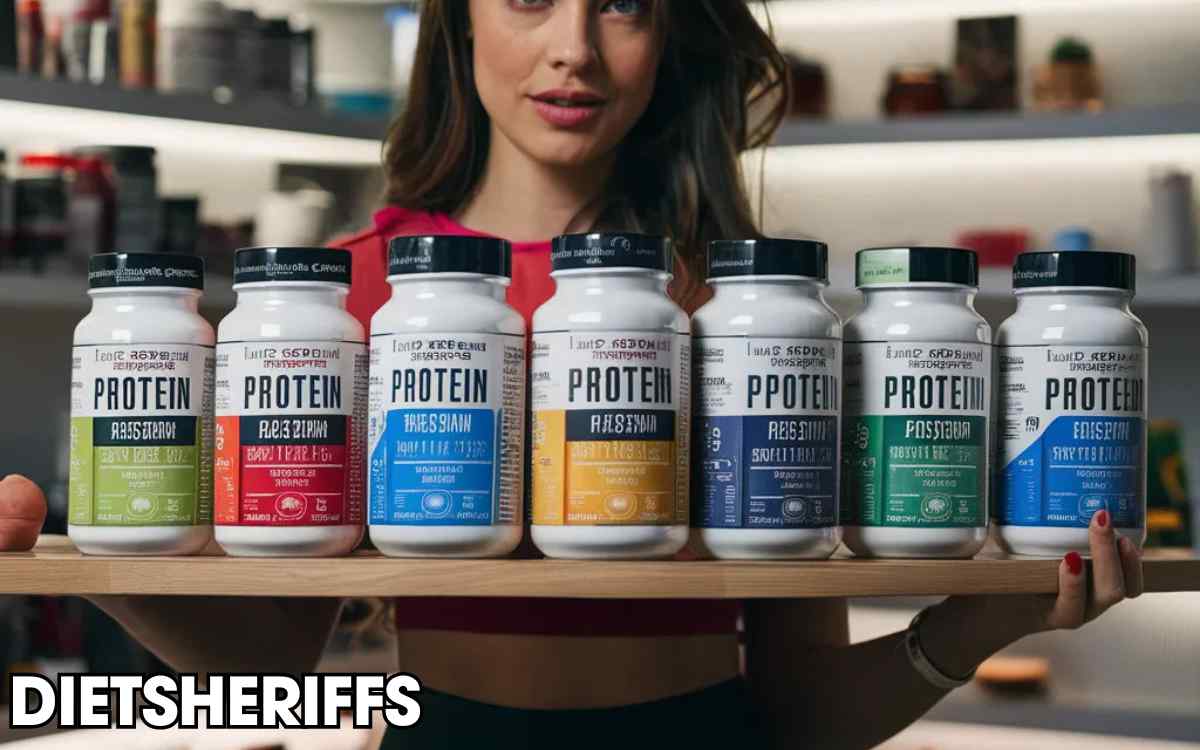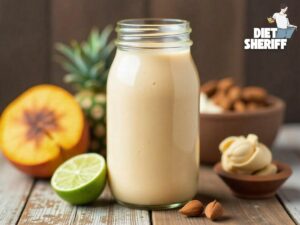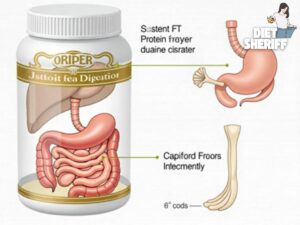For many women, reaching weight loss objectives is a common desire. Protein powder can be an effective strategy for this when combined with a nutritious diet and regular physical activity.
One of the many advantages of protein powder for women is weight loss. But, how to use protein powder for weight loss female?
To know the answer, it’s important to understand some useful advice for choosing the best protein powder.

What Specific Strategies Are Recommended For Females Using Protein Powder To Support Weight Loss?
There are protein powders dietitians think that are good for weight loss. The following tips will help you choose the top protein powder for weight loss:
High Protein Content:
Seek protein powders with an excess of protein in each serving. If you want to feel full, try to get at least 15-20 grams of protein each meal.
Low in Calories and Added Sugars
Choose protein powders with minimal calorie and added sugar content.
Steer clear of items that have a lot of added sugar as they increase the number of calories consumed.
Select powders that have been sweetened with stevia and monk fruit, which are natural sweeteners.
Related Articles: Homemade Protein Drinks for Weight Loss
Low in Fat and Carbohydrates
Select protein powders with minimal fat and carbohydrate content.
Seek for items with the labels “plant-based protein isolate” or “whey protein isolate,” as they often contain less fat.
Quality Ingredients
Choose protein powders that are created with premium components and carefully read the ingredient list.
Steer clear of goods that include artificial preservatives and additives.
Check for protein powders that include nutrients that are naturally occurring and barely processed.
Complete Protein Source
A broad amino acid profile should be provided by any plant-based protein supplement you use.
This ensures that you are obtaining all the critical amino acids required for the development and repair of muscle.
Related Articles: What Happens if You Drink Protein Shakes Without Working Out
Added Nutrients and Functional Ingredients
Take into consideration protein powders with extra nutrients to aid in weight loss.
Probiotics, fiber, and green tea extract are a few ingredients that can assist enhance digestive health and speed up metabolism.
Which Kinds of Protein Powder are Available for Women?
Which kind of protein powder is good and how to use protein powder for weight loss female? These are a few common kinds:
Whey Protein
- One of the most well-liked and accessible kind of protein powder is whey protein.
- It comes from milk and is easily absorbed by the body. This makes it the perfect recovery food for after a workout.
- Essential amino acids, which are necessary for muscle development and repair, are abundant in whey protein.
Casein Protein
- Although it is likewise produced from milk, casein protein absorbs more slowly than whey protein.
- A continuous release of amino acids into the circulation over a few hours can be achieved.
- In order to encourage nighttime muscle development and repair, casein protein can be consumed before to going to bed.
Related Articles: Does Protein Shake Make You Lose Weight?
Plant Based Protein
- Plant-based protein powders are made from a variety of plant sources, including rice, hemp, soy and peas.
- Vegetarians and those with lactose intolerances and allergies to dairy products can enjoy them.
- A range of nutrients, including those that support heart health are commonly found in plant-based proteins.
Egg White Protein
- Dried egg whites are used to make egg white protein powder, which is a comprehensive source of protein.
- It includes every necessary amino acid. It is readily digested and has little fat and carbs.
Collagen Protein
- Collagen, the most prevalent protein in the body, is the source of collagen protein.
- The potential health advantages of collagen protein powder for the skin, joints and intestines are frequently addressed.
- Collagen protein can be a useful supplement to a woman’s diet, even if it is not a complete protein supply because it is missing some key amino acids.
Soy Protein
- All of the necessary amino acids are present in soy protein, which comes from soybeans. It is a complete protein supply.
- It is a well-liked option for vegans and vegetarians, and it is also appropriate for those who are lactose intolerant.
- Because soy protein contains phytoestrogen, it helps with menopausal symptoms.
Pea Protein
- Pea protein is a premium plant-based protein source that comes from yellow peas.
- It contains a lot of branched-chain amino acids (BCAAs) and is readily digested.
- Furthermore, pea protein is frequently seen as being more ecologically friendly than protein derived from animals.
Hemp Protein
- Hemp protein is a complete protein source that comes from the seeds of the hemp plant.
- It is high in fiber, vitamins, minerals and omega-3 and omega-6 fatty acids.
- With its nutty taste, hemp protein is frequently combined with other plant-based proteins.
Related Articles: Can You Put Protein Powder in Tea?
Rice Protein
- Brown rice is the source of rice protein, a plant-based protein that is hypoallergenic diet sheriff.
- Rice protein has a neutral taste and is readily digested.
Blended Protein Powders
- There are protein powders on the market that are combinations of several protein sources, including casein, soy, pea, and whey protein.
- The goal of blended protein powders is to offer a complete spectrum of amino acids.
Weight Management Formulas
- Certain protein powders designed for females are especially made to help with weight control and fat reduction needs.
- Additional substances including fiber, caffeine, and green tea extract may be present in some.
- These components improve fat burning, raise satiety and speed up metabolism.
Weight Loss Recipes with Protein Powder for Females
The following protein powder recipes are designed to help people lose weight:
1. Protein Smoothie
Ingredients:
- One scoop of your preferred plant-based, whey and other protein powder
- One cup of water or almond milk without sugar added
- The equivalent of half a cup of frozen berries, such raspberries, blueberries, or strawberries
- Half of a frozen banana
- A handful of kale or spinach
- Ice cubes
Instructions:
- In blender, combine all ingredients.
- Blend till creamy and smooth.
- Scoop it into a glass.
- Savor for a filling breakfast or after working out.
2. Protein Pancakes
Ingredients:
- One scoop of plant-based or whey protein powder
- Half a cup of oats
- Half a cup of almond milk without sugar
- One egg or flax egg (three tablespoons of water with one tablespoon of milled flaxseed)
- Half a scoop of plant-based or whey protein powder
- Cinnamon, vanilla essence, preferred sweetener (stevia, honey, or maple syrup) are optional.
Instructions:
- Blend all ingredients together in a blender until smooth.
- Over medium heat, preheat a nonstick skillet or griddle.
- To make pancakes, pour batter into the skillet.
- Cook until surface bubbles appear, then turn and continue cooking until the other side is golden brown.
- For extra taste and protein, serve with nut butter, Greek yogurt, or fresh fruit.
3. Protein Oatmeals
Ingredients:
- One-half cup rolled oats
- One cup of almond milk without sugar or water
- One scoop of chocolate or vanilla protein powder
- One tablespoon of ground flaxseed
- Optional garnishes include sliced banana, berries, almonds, sesame seeds etc
Instructions:
- Heat up some water or almond milk in a small pot.
- After adding the rolled oats, lower the heat to a simmer.
- Cook, stirring periodically, until the oats become creamy and soft, about 5 to 7 minutes.
- Take off the heat and thoroughly mix in the protein powder.
- Spoon oats into a bowl and garnish with desired ingredients.
Explore Also:
Creativehouseblog
Gigasecurehome
Mycleanseplan
How to Use Protein Powder for Weight Loss Female – FAQs
Does taking protein powder have any negative effects?
It’s essential to select high-quality items and adhere to suggested serving quantities.
Can water be added to protein powder?
Yes.
Will protein powder make me bulky?
No.
Does protein powder assist lessen the need to snack and fulfill cravings?
Yes.






